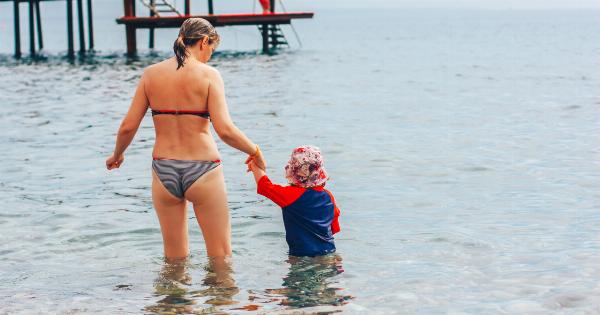Drowning is a leading cause of death for babies and young children. It can happen swiftly and silently, and in as little as two inches of water.
As parents and caregivers, it is important to know how to recognize the signs of drowning and be prepared to take action. In this article, we will discuss ways to save a drowning baby.
1. Keep a Close Watch
The first and most important way to save a drowning baby is to keep a close watch on them at all times. Do not leave your child unattended near water, even for a moment. If you have a swimming pool, install a four-sided fence with a self-latching gate.
Keep all doors and windows leading to the pool area locked, and use pool covers when not in use.
2. Learn to Recognize the Signs of Drowning
Drowning is often depicted in movies and TV shows as a loud, dramatic event. However, in real life, drowning is usually quiet and can easily go unnoticed. Look for these signs of drowning:.
- Head tilted back with mouth open
- Eyes closed or glassy
- Arms and legs moving in a bicycling motion
- Body slumped or limp
- Unable to call for help
If you notice any of these signs, act quickly.
3. Stay Calm
If you see a baby in distress, it is important to remain calm. Panicking can cause you to act impulsively and make mistakes. Take a deep breath and assess the situation before taking action.
4. Call for Help
Call out to someone nearby for help or dial 911 immediately. Time is of the essence when it comes to drowning, and every second counts.
5. Reach or Throw, but Don’t Go
If the baby is within arm’s reach, reach out and try to grab them. If they are too far away, throw something that floats, such as a pool noodle, to them.
Do not jump in the water to try to save them yourself, as this can put both you and the baby in danger.
6. Perform CPR
If the baby is not breathing, perform CPR immediately. Lay the baby on their back on a firm surface and tilt their head back slightly. Pinch their nose and give two quick breaths, then give 30 chest compressions.
Repeat this cycle until help arrives or the baby starts breathing on their own.
7. Get Medical Attention
Even if the baby appears to be breathing and responsive, it is important to seek medical attention right away. Drowning can cause secondary injuries, such as hypothermia and brain damage, that may not be immediately obvious.
8. Learn CPR
Every parent and caregiver should learn CPR. Taking a CPR class can give you the skills and knowledge you need to save a life in an emergency.
9. Prepare for Emergencies
Make sure to keep a first aid kit and emergency phone numbers handy. Take a CPR class and learn basic first aid skills. You never know when an emergency may strike, and being prepared can make all the difference.
10. Teach Water Safety
Teaching children about water safety is one of the best ways to prevent drowning. Make sure children know to never swim alone, to always ask for permission before getting in the water, and to use a life jacket if they cannot swim.































